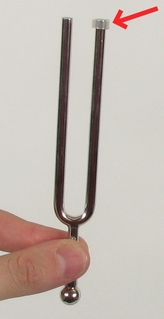Principle
If several sound signals reach our ears simultaneously, these signals superpose, thus forming a resulting signal. If the individual signals all have the same frequency, the resulting signal can also be heard with this frequency. The volume, however, varies. If one hears two sound signals with different frequencies, one can observe an effect that is known as beats. Beats are used, for example, to tune musical instruments. In this experiment, the students learn how beats are produced and also how the frequency of the beat of two tones is connected to the frequencies of the individual tones.
Benefits
- Experiment is part of an experiment set with a total of 22 experiments about generation, propagation and perception of sound, oscillations and waves
- Particularly appropriate as an experiment for first contact with physics in general
- With graphic student worksheets
- With detailed instructor information
- Optimized for tight schedules, i.e. minimum preparation time required
Tasks
Find out what actually happens during a beat in the course of this experiment. Examine how the superposition of two tuning forks of the same frequency sounds if one of the tuning forks is slightly tuned off with the aid of a small piece of silicone tubing. Use the PC to analyse how such a superposition changes as a function of the difference in frequency between the individual signals.
Learning objectives
- Superposition
- Beat
- Beat frequency


